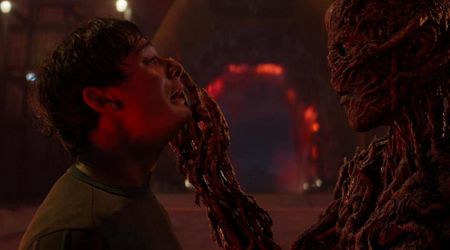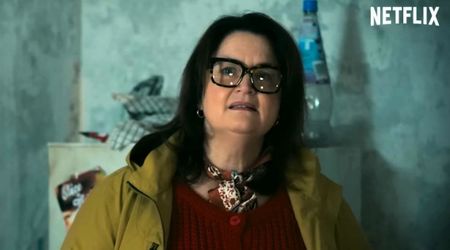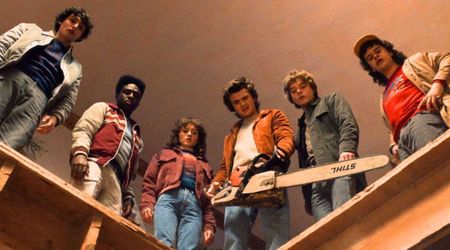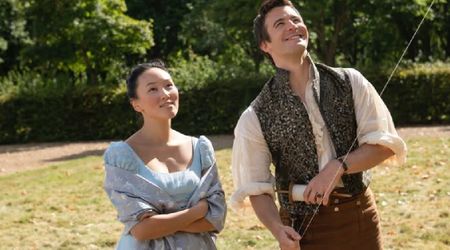Eat. Spy. Love: How Julia Child found love and sharks in Sri Lanka

HBO Max’s new show ‘Julia’ is based on the life of Julia Child. The comedy television series, starring Sarah Lancashire as Julia Child and David Hyde Pierce as Paul Child, will premiere on March 31. HBO Max has said that it “explores a pivotal time in American history—the emergence of public television as a new social institution, feminism and the women's movement, the nature of celebrity and America's cultural evolution. At its heart, the series is a portrait of a loving marriage with a shifting power dynamic.”
Chris Keyser, the showrunner and executive producer of ‘Julia’, told PEOPLE: “Julia Child changed our attitude about food. She put public television on the map. She modeled the idea of a modern, independent woman. And yet all of that put together doesn't quite explain why, 60 years later, we still can't get her out of our heads.”
READ MORE
'Next Level Chef' Season 2: 5 things to know about FOX reality cooking show
'Next Level Chef' Preview: Who's going to win the season finale?
Daniel Goldfarb, the creator and executive producer of the show, added: “Julia Child had a singular can-do spirit that is timeless and inspiring and seems more miraculous than ever. She was delightfully ahead of her time in almost every way. She did everything – and she did it with grace, humor, compassion, and endless charm.”
However, it has been said that Julia Child was not always Julia Child. Born as Julia Carolyn McWilliams in Pasadena, California, she was the daughter of a prosperous financier and consultant, who graduated from Smith College and worked in advertising. But things changed when she joined the Office of Special Services (OSS) as a typist in Washington, D.C.

Later, Julia was promoted to executive assistant to Captain Harold J. Coolidge, the scientist who gave her the shark case. The National WWII Museum reported that “she found herself assigned to an experimental research project called the Emergency Sea Rescue Equipment Section. She was developing a shark repellent that could be rubbed on pilots who had been down at sea.”
In April 1944, Julia was sent to Kandy, Ceylon (now Sri Lanka), and her life dramatically changed. There she was given the position of “Administrative assistant” and her work included “registering, cataloging and channeling a great volume of highly classified communications.” However, the biggest change came when she met her future husband there.
The author of ‘Dearie: The Remarkable Life of Julia Child’ Bob Spitz had said, “Julia’s experience in Ceylon changed everything for her. Before she arrived, she was aimless in life, looking — searching — for anything that would give her something meaningful to do. Her job in Ceylon, with the OSS, brought everything into focus for her. It taught her discipline and gave her purpose and responsibility. It is also where she met Paul Child, who would become her husband and lifelong mentor, the man who would fill up her ‘empty tank.’ Going to Ceylon also made Julia appreciate foreign travel and learning about other cultures, which she enjoyed for the rest of her life.”

It has been said that Paul, one of her OSS colleagues in Ceylon, was not impressed with Julia at first. He referred to her as “an extremely sloppy thinker” with “an unbecoming blond mustache” in letters to his brother. Apparently, the feeling was mutual since Julia found him “too short, bald with an unbecoming mustache and an unbecoming nose.” However, during an expedition to photograph elephants, she began to take to him.
After Paul was transferred to Kunming, China, Julia followed him, and from there, her actual food journey began. “They hated the Army food – rice, potatoes, canned tomatoes. Together they explored the Chinese food in local restaurants. Then they were transferred to Chongqing, where they continued their culinary adventures,” The New England Historical Society reported.

The pair exchanged vows in Lumberville, Pennsylvania, on Sept. 1, 1946, and two years later shifted to Paris after Paul was given the role of an exhibits officer with the US Information Agency. While in Paris, Julia reportedly got herself admitted to Le Cordon Bleu (a cooking school). The Week reported that in Paris she “was taken on a culinary journey through smells and sights of food—ham and sausage, cabbages, pig trotters, mussels, and champignons (button mushrooms).”
The Week report added: “Later, meeting Simone Beck and Louisette Bertholle led the trio to come together to work on a French cookbook for Americans, spending hours, days and even continents between their correspondences. Repeatedly testing and trying out recipes, their 850-page manuscript was rejected at the first go, for being too tedious and long. After a major revision and another rejection, the now-celebrated book, 'Mastering the Art of French Cooking' came out,” and the rest is history.

Julia was honored with several awards, including a Peabody Award in 1964, an Emmy Award in 1966 for her television work, and a National Book Award in 1980. According to Britannica, she was “appointed to the French Legion of Honour (2000) and received the Presidential Medal of Freedom (2003). A portion of her kitchen and some of her kitchen implements were put on display at the Smithsonian Institution in Washington, D.C.”










